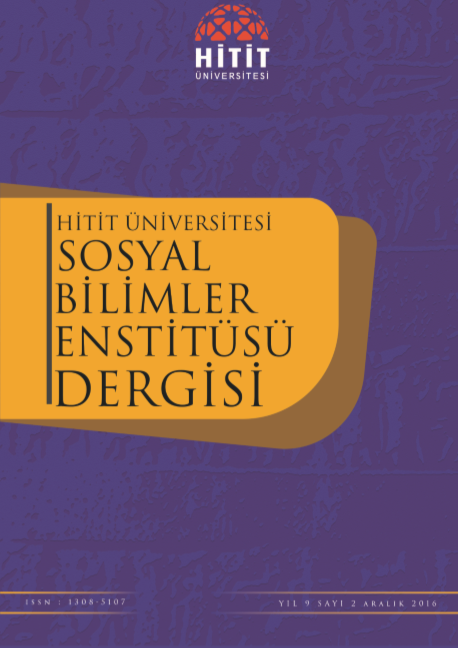Murat Gülsoy’un “Baba Oğul ve Kutsal Roman” Adlı Eserinde Yapı ve Simgeler
Structure And Symbols In Murat Gülsoy’s Novel “Baba Oğul Ve Kutsal Roman
Author(s): Ahmet UsluSubject(s): Turkish Literature, Theory of Literature
Published by: Hitit Üniversitesi Sosyal Bilimler Enstitüsü
Keywords: Murat Gülsoy; Postmodern Structure; Metafiction; Dreams;
Summary/Abstract: As a postmodern literary work, Murat Gülsoy’s Novel “Baba Oğul ve Kutsal Roman” is a novel that shows how to live a life through the literature. The novel, which starts with parody of rifle – hanging on the wall – metaphor in Chekhov’s story writing style, brings about literary works of several writers such as Ahmet Hamdi Tanpınar, Oğuz Atay, Orhan Pamuk, Luis Borges, Vladimir Nabokov, Edgar Allan Poe, and Franz Kafka. Dreams have an impact as directing the novel’s fictional structure in the aforementioned novel in which the reality is questioned. Gülsoy introduces all the events at the time while coming up with metafiction in the novel that runs between fiction and reality. The author who suggests a setting without any time and space prefers a multilayered structure. In the present study, it is purposed that this multilayered structure composed of symbols will be investigated.
Journal: Hitit Üniversitesi Sosyal Bilimler Enstitüsü Dergisi
- Issue Year: 9/2016
- Issue No: 2
- Page Range: 957-980
- Page Count: 24
- Language: Turkish

